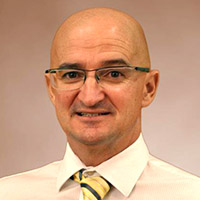With each study into world-class cyclists being pushed to the physiological limit, University of Colorado Anschutz Medical Campus researchers get deeper insight into high-performance metabolism. They are also gaining clues about how to head off serious diseases in the general population through early detection and personalized interventions.
In a 2020 study, the group characterized the endurance capacities of professional cyclists on UAE Team Emirates, which co-author Iñigo San Millán, PhD, an assistant professor in the Division of Endocrinology, Metabolism and Diabetes at the University of Colorado School of Medicine, coaches.
In a new study published in Sports Medicine, the group for the first time took its research of professional cyclists’ metabolomics, previously confined to the controlled environment of a training room, into the “battlefield” of a multi-stage competitive race.
New innovation
“The innovation here was, we know that this method works, but can we make it scalable in the field?” said new study co-corresponding and senior author Angelo D’Alessandro, PhD, professor and director of the Metabolomics Core of the CU School of Medicine, Department of Biochemistry and Molecular Genetics, and CU Cancer Center member. While the athletes competed, the researchers collected samples non-invasively – from a device attached to their shoulder that drew and immediately dried blood droplets – that were then analyzed back in the lab.
“It allowed us to see parameters that we had no idea we could see,” San Millán said. “For example, in one cyclist’s sample we saw off-the-charts antioxidant capacity, which explains his very fast recovery.”
The innovative platform combines volumetric absorptive microsampling with metabolomics, which allows researchers to capture the metabolic snapshot of an athlete at a moment in time – in this case, during extreme exertion. “We started to adapt these strategies because we knew we weren’t going to be able to get into the battlefield carting dry ice all over the place (to preserve blood samples),” said study co-corresponding and lead author Travis Nemkov, PhD, assistant research professor of biochemistry and molecular genetics and CU Cancer Center member.
Metabolomics signature
The platform’s refinement provides the framework for the researchers to branch out to provide detailed molecular resolution in anyone – not just athletes. Using the platform, a person can collect blood samples at home, mail them at room temperature to a lab, and receive a molecular readout – a metabolomics signature – a few weeks later.
On top of providing a readout of current metabolic status, the data might be able to inform clinicians about a patient’s risk for common and serious diseases, such as type 2 diabetes, cardiovascular disease, metabolic syndrome (including obesity), cancer and Alzheimer’s disease.
“So, we can use this approach for regular folks like us, and we’ve started to incorporate this into the Bfit BWell Cancer Exercise program at the CU Anschutz Health and Wellness Center,” Nemkov said. In Bfit BWell, the idea is to develop personalized exercise prescriptions to strengthen a cancer patient before chemotherapy begins, or, post-chemo, increase a patient’s wellness and recovery.
San Millán said the researchers use the metabolic platform to look at the bioenergetics and mitochondrial function of cells. A dysregulated mitochondrial function is a tip-off to many diseases.
“Up until now, these dysregulations could not be detected, so if we can detect them at different levels of metabolism and bioenergetics, we can get a person’s metabolic signatures,” he said. “What if we could get signatures of someone who, in one or two decades, is going to develop type 2 diabetes, for example? We can be ahead of the game and change things completely. We can tell the person they need to change some things – lifestyle, nutrition, behavioral habits.”
Predictors of injury
D’Alessandro said these studies also give researchers a picture of small-molecule metabolites as predictors of potential injury. They can monitor, for example, the accumulation of small-molecule metabolites in the bloodstream of someone who has suffered a traumatic brain injury. “All of this information can be used in the service of improving performance in athletes, but also improving general health,” he said.
“We are scratching the surface … we’re seeing a lot of diseases where the metabolomic aspect is huge,” San Millán said. “Metabolism used to be the poor brother of medicine – everything was genetics and pathophysiology. And now metabolism is the crown prince of medicine.”
Now, through the non-invasive approaches of gathering and analyzing thousands of parameters of mitochondrial function, dysregulations of key functions can be detected long before disease develops, San Millán. All of this analysis is enhanced by artificial intelligence and machine learning.
“With CU Anschutz’s big push into AI, we now have the data, expertise and know-how to push the boundaries of the field from a sports and metabolism standpoint,” D’Alessandro said.







